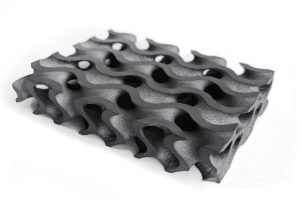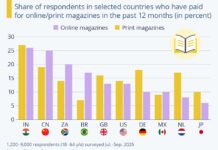D3-AM, which is a start-up subsidiary of the Durst Group, used last month’s Formnext show to introduce a new 3D printing technology that it calls micro particle jetting, which is targeted at ceramics manufacturing.
This is an inkjet-based technology using a water-based fluid. There are two basic approaches to using inkjet technology in additive manufacturing. By far the most common is binder jetting, which essentially involves jetting a liquid adhesive to a powdered build material in order to assemble the part one layer at a time.
The alternative is material jetting, which as the name implies, involves jetting the build material itself through the printheads. Anyone involved in any form of inkjet printing will know that jetting large particles through an inkjet printhead is quite a challenge.
Stefan Waldner, chief product officer of D3-AM GmbH, explained, “Material Jetting, from a theoretical standpoint, represents the most promising technology in additive manufacturing as it enables the construction of objects drop by drop, voxel by voxel. By overcoming material compatibility restrictions, our MPJ-technology paves the way for the production of previously deemed impossible components.”
To this end, D3-AM has developed its own inkjet printhead, specifically so as to be able to handle large particle sizes. Waldner elaborated, “We developed a special printhead to print water based suspensions with particle size up to 62µm. Therefore, we are able to use standard raw materials and the characteristics remain the same as on traditional manufacturing methods.”
The process has been designed for ceramics. Waldner says that what differentiates the D3-AM offering from others such as XJet is that it is producing parts out of dense Sintered Silicon Carbide (SSiC). He noted: “Others showed parts which are either out of Silicon infiltrated Silicon Carbide (SiSiC) or they are not dense because they have been printed with FFF, or they didn’t print complex parts.”

Waldner told me that the process might also be applicable to other materials but added: “We see the biggest advantage on ceramics, and we will stay there.”
D3-AM has also developed its own LABII printing system. This has a build chamber up to 240×500 mm with Waldner claiming that the productivity is close to binder jetting, depending on the material. He noted, “With our prototype we were able to print components not possible to print today with any other technology.”
The LABII machine is still in development, with a plan to install two machines in 2024 at customer sites for beta testing. Waldner says that the beta testing should be complete by the end of 2024, which would mean that D3-AM should be close to a commercial launch of this device by next year’s Formnext show.
Christoph Gamper, CEO and co-owner of the Durst Group, commented, “With our presence at Formnext with the D3 LABII system, we are starting a new chapter at Durst – Material Jetting. The tradeshow has clearly shown that we are onwards in the premier class of materials – ceramics – and we look forward to scaling the printing systems, processes, and materials to open up a world of possibilities.”
I’m going to speculate further that if the Durst Group now has the capability to develop its own printheads as well as specialized fluid suspensions then we could see some interesting developments in industrial printing in the next couple of years as well. Either way, Durst and D3-AM are definitely worth keeping an eye on.
You can find further details from d3-am.com and durst-group.com.
First published in the Printing and Manufacturing Journal www.nessancleary.co.uk on 7 December 2023. Republished with permission.


















